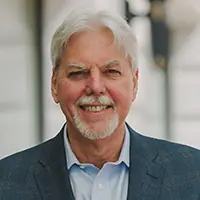
Grinding it Out at Bank of America

BD: What kind of operating environment do you think we’ll have during the next 12-18 months?
Noski: Our expectation is that the economy will continue to expand, but at a very slow pace. The Federal Reserve has already signaled its expectations about the economy by indicating it intends to keep interest rates low for the next couple of years. That’s not good for deposit funded banks because we make money on the spread and the lower the interest rates the more difficult it is to earn spread, but the Fed is trying to stimulate the economy and we understand that. Out in the marketplace, loan demand continues to be weak, especially in the corporate sector, and lots of corporations, because of their perception of uncertainty in the economy, have built huge cash positions. Some are doing share buy-backs and some are making acquisitions, but largely companies are hoarding cash. So, in sum, I would say it’s going to be probably a grind-it-out type of environment over the next year or two.
BD: What’s your strategy from an operating perspective?
Noski: We have six business lines. Five of those six business lines are profitable. The sixth is our mortgage business and that’s primarily being impacted by the legacy Countrywide Financial issues, but we are redefining that business. We’ve set up a lot of reserves against the problems from those legacy (mortgage loan) portfolios and we’re streamlining that business. With respect to the other five, our consumer bank has been impacted significantly and prospectively by (various) new regulations including the Dodd-Frank Act, so we’re repositioning that business to reflect those regulatory and legislative realities. We’re continuing to invest in our market-based businesses, (including) sales and trading and investment banking around the world and selectively in the wealth management area. We’re also looking hard at our cost structure. We’ve instituted something we call New BAC, which is a program to (allow us to work more efficiently) inside the bank and make it easier for our customers to work with us. We think this will help us reduce our expenses, and there are also some revenue opportunities there. We’ll probably be realizing the full benefits of that (effort) as we enter 2014.
BD: There has been a lot of speculation about whether or not Bank of America would or should sell Merrill Lynch. What is the company’s plan for that business?
Noski: We run an integrated business model where the business lines are expected to work together very closely to bring all of the capabilities of Bank of America to customers and clients. Merrill Lynch is a very essential part of that. It’s profitable, both the wealth management piece and the investment banking and sales and trading piece, and we don’t see selling Merrill Lynch as consistent with our strategy, or frankly good for our shareholders. Bank of America today has some sort of a business relationship with one out of every two households in America. That may be a credit card, it may be a mortgage, it may be a Merrill Lynch wealth management account, it may be a debit card, a checking account, a savings account or a CD. If you go to a Bank of America ATM, you can execute transactions and move money between your Merrill Lynch and your Bank of America accounts. Our whole thrust is the integration of all of those capabilities across all of our businesses, so there are no plans to sell or divest any part of Merrill Lynch.
BD: What are you doing to get the mortgage problems behind you?
Noski: We’re dealing with all of the key counterparties (in litigation). Obviously the regulators are involved and we are working closely (with them) and trying hard to be as responsive as we can to their concerns and observations. We have a number of private parties that would like some part of our institution to step up and reimburse them. We’ve disclosed in our 10Qs and 10Ks an array of claims and litigations that have been asserted against us. We think a lot of the litigation that you read about does not have merit and we’re going to diligently defend against that. Having said that, to the extent that there are legitimate claims by parties against us, we’ll evaluate them and if we have to settle them and pay money, we will.

Join OUr Community
Bank Director’s annual Bank Services Membership Program combines Bank Director’s extensive online library of director training materials, conferences, our quarterly publication, and access to FinXTech Connect.
Become a Member
Our commitment to those leaders who believe a strong board makes a strong bank never wavers.



